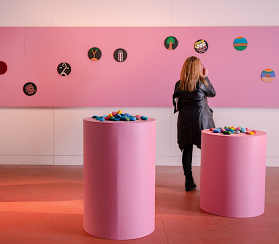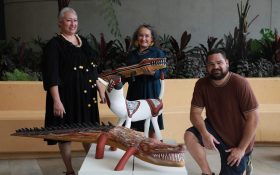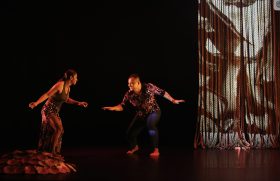The author Seth Godin once said that philanthropy is tied into a person’s idea of themselves and their place in society – ‘people like us, do things like this’. That may be giving $5 to a GoFundMe campaign to support the studio time for a young independent artist or a $10 million donation to the new wing of a gallery. Underscoring both is a culture of arts philanthropy that has been formed well before an artist or organisation came calling.
Over the course of my career, I have had the privilege to lead major arts organisations in Dublin, Edinburgh and Sydney. In each case, fundraising was a crucial part of the company’s income, representing about a third of total turnover. Over the past two decades, that amounted to tens of millions of euros, pounds and dollars. As the organisations I worked for had international dimensions, I became familiar with different cultures of giving in cities and countries further afield.
What I discovered was that each place has through its history, culture, politics, religion and personality a different relationship with arts philanthropy. In cities such as Minneapolis, philanthropy is the single most important income source of most arts organisations, while in Berlin, it makes up a modest or non-existent part of cultural budgets. In some cities, arts philanthropy is channelled through corporate entities, while in others it is personalised around individuals. Philanthropy is, in some communities, a part of everyday life for those on modest incomes, while in others it is solely focused on those with substantial means.
Cultures of philanthropy are in a constant state of change. Cities with no deep-rooted history of giving to the arts can develop a donor culture when a generation of like-minded individuals find that the arts connect with their values and beliefs. Additionally, a few consistently high-quality, well-governed arts organisations that take a long-term strategic approach to philanthropy can build a community of supporters from which the whole sector can benefit. At the same time, a lack of care and attention by the arts sector, or an over reliance on a small, ageing donor group, can see a healthy culture of arts philanthropy wither on the vine.
So, whose job is it to create, nurture and sustain a broad-based culture of philanthropy within a community? Some countries have agencies designed to encourage the arts to develop sources of income. While they have enjoyed success in corporate partnerships or government advocacy, they often struggle with the more relationship-based world of philanthropy. Individual arts organisations do heroic work, but their focus is, naturally, on their own needs.
The nurturing of an underlying culture of arts philanthropy usually happens in private settings, driven by individuals who do not work in the arts, but who advocate to their friends and colleagues that culture is important, and that they will find it rewarding to be part of a community of supporters. These cultural evangelists build tribes of people with shared values and put the arts at the centre of their conversations. Over a period, they can shape an entire culture of arts philanthropy in their community. Donors may respond to the projects that organisations put in front of them, whether they are education programs, new buildings or commissions, but the foundational work of shaping them as arts philanthropists has taken place among their peers.
While a culture of giving can be developed within a generation, the converse is also true. We are about to see the greatest transfer of wealth in history. In the US alone, US$84 trillion will be handed from Baby Boomers to Gen-Xs and Millennials through inheritance. In Australia the figure is AU$3.5 trillion. The opportunity is immense – the coming generation places great value on creativity and innovation. They are committed to social change and are often culturally engaged. The future success of arts philanthropy will be determined by whether those in their 30s and 40s believe that ‘people like us, do things like this’ rather than ‘people like my parents, do things like this’. Like those before them, this next generation is forming new tribes with new values. The arts need a new stable of cultural heroes drawn from our communities – new people in their 30s and 40s whose values and achievements are widely respected, new people who care about developing the arts for tomorrow, new people who can articulate how culture can offer solutions to problems that their generation care about.
In Generation Impact: How Next Gen Donors Are Revolutionizing Giving, authors Sharna Goldseker and Michael Moody offer up observations from interviews and surveys with younger philanthropists. According to Goldseker and Moody, this new community of donors expect hard evidence that shows how their support is making a difference. They demand total transparency from boards and leaders, and are seeking hands-on engagement through an investment of their time and skills.
Interestingly, they also suggest that the coming generation have great respect for the legacy of giving that has gone before them, but they want to bring their own experiences, values and ideas to the table. In these challenging post-pandemic times, most people who work in the arts are focused on immediate needs. The development of a culture of philanthropy in the next generation is, understandably, far from a priority. However, the current generational shift offers a potentially transformative opportunity for the arts. Trustees of arts organisations need to ring-fence time to plan beyond the coming season or even their current leadership to consider the forging of relationships that may not bear fruit in the short or even medium term.
Ensuring a broad generational mix at the board table is a good start. Policy-makers need to shape their long-term investments in ways that work in partnership with, and act as an incentive for, next generation philanthropy. And the cultural sector needs to work as one to ready itself for the differing priorities and expectations of tomorrow’s family of donors.





